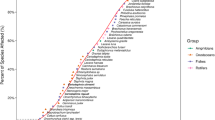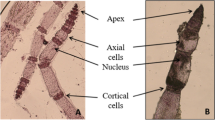Abstract
Heavy metals have adverse effects to aquatic organisms, and endocrine-disrupting chemicals (EDCs) alter the normal functioning of hormones in living organisms. In the present study, an acute toxicity test was performed to determine the EC50 values in the water flea Daphnia magna exposed to Cd, Pb, Hg, 4-nonylphenol (NP) and bisphenol A (BPA) for 48 h, according to the OECD test guideline 202. The mRNA expression of Cu/Zn-SOD, Mn-SOD, and catalase (CAT) was analyzed using real time RT-PCR. The results indicate that all chemicals tested showed a negative effect on the mobility of D. magna. The 48-h EC50 values were 21.0 μg/L for Cd, 694.6 μg/L for Pb, 3.8 μg/L for Hg, 18.9 μg/L for 4-NP and 8.3 mg/L for BPA. The order of toxicity based on the EC50 values was as follows: Hg>4-NP>Cd>Pb>BPA. Gene expression patterns indicated that Cd and Pb increased the mRNA levels of the genes encoding three antioxidant enzymes upon exposure for 48 h. Mn-SOD and CAT mRNAs were sensitively modulated in response to Pb. In contrast, the expression of these genes was up-regulated at 24 h and then reduced at 48 h after exposure to Hg. These findings suggest that the heavy metals (Cd, Pb, and Hg) can induce oxidative stress in D. magna and that the antioxidant enzymes were sensitive to 24h-Hg and 48h-Pb exposure. A significant increase in the mRNA expression of three antioxidant enzymes was observed after exposure to 4-NP, whereas a slight modulation of Mn-SOD and CAT mRNA levels was detected in response to BPA, indicating that these genes are involved in a cellular defense system against EDCs-mediated oxidative stress.
Similar content being viewed by others
References
Juarez-Franco, M. F., Sarma, S. S. S. & Nandini, S. Effect of cadmium and zinc on the population growth of Brachionus havanaensis (Rotifera: Brachionidae). J. Environ. Sci. Health. Part A 42, 1489–1493 (2007).
Das, S. & Khangarot, B. S. Bioaccumulation of copper and toxic effects on feeding, growth, fecundity and development of pond snail Lymnaea luteola L. J. Hazard. Mater. 185, 295–305 (2011).
Diamanti-Kandarakis, E. et al. Endocrine-disrupting chemicals: An endocrine society scientific statement. Endocr. Rev. 30, 293–342 (2009).
Choi, M. S. et al. Nonylphenol-induced apoptotic cell death in mouse TM4 sertoli cells via the generation of reactive oxygen species and activation of the ERK signaling pathway. J. Appl. Toxicol. 34, 628–636 (2014).
Bindhumol, V., Chitra, K. C. & Mathur, P. P. Bisphenol A induces reactive oxygen species generation in the liver of male rats. Toxicology 188, 117–124 (2003).
Wu, M., Xu, H., Shen, Y., Qiu, W. & Yang, M. Oxidative stress in zebrafish embryos induced by short-term exposure to bisphenol A, nonylphenol, and their mixture. Environ. Toxicol Chem. 30, 2335–2341 (2011).
Isani, G., Monari, M., Andreani, G., Fabbri, M. & Carpenè, E. Effect of Copper Exposure on the Antioxidant Enzymes in Bivalve Mollusc Scapharca inaequivalvis. Vet. Res. Commun. 27, 691–693 (2003).
Vale, G., Franco, C., Diniz, M. S., dos Santos, M. M. C. & Domingos, R. F. Bioavailability of cadmium and biochemical responses on the freshwater bivalve Corbicula fluminea -the role of TiO2 nanoparticles. Ecotoxicol. Environ. Saf. 109, 161–168 (2014).
Ken, C., Lin, C., Shaw, J. & Wu, J. Characterization of Fish Cu/Zn-Superoxide Dismutase and Its Protection from Oxidative Stress. Mar. Biotechnol. 5, 167–173 (2003).
Cao, L., Huang, W., Liu, J., Yin, X. & Dou, S. Accumulation and oxidative stress biomarkers in Japanese flounder larvae and juveniles under chronic cadmium exposure. Comp. Biochem. Physiol. Part C 151, 386–392 (2010).
Won, E. J., Lee, J. S. & Lee, Y. M. Combined effects of cadmium and copper on the expression of antioxidant enzyme -coding genes in the polychaete, Perinereis nuntia. Toxicol. Environ. Health. Sci. 5, 26–33 (2013).
Won, E. J., Ra, K., Kim, J. T., Lee, J. S. & Lee, Y. M. Three novel superoxide dismutase genes identified in the marine polychaete Perinereis nuntia and their differential responses to single and combined metal exposures. Ecotoxicol. Environ. Saf. 107, 36–45 (2014).
OECD, Test No. 202: Daphnia sp., Acute immobilisation test. DOI: http://dx.doi.org/10.1787/97892640699 47-en (OECD Publishing, Paris, 2004).
Kim, J. et al. Molecular cloning of Daphnia magna catalase and its biomarker potential against oxidative stresses. Comp. Biochem. Physiol. Part C 152, 263–269 (2010).
Lyu, K., Zhu, X., Wang, Q., Chen, Y. & Yang, Z. Copper/Zinc Superoxide Dismutase from the Cladoceran Daphnia magna: Molecular Cloning and Expression in Response to Different Acute Environmental Stressors. Environ. Sci. Technol. 47, 8887–8893 (2013).
Lyu, K., Zhu, X., Chen, R., Chen, Y. & Yang, Z. Molecular cloning of manganese superoxide dismutase gene in thecladoceran Daphnia magna: Effects of microcystin, nitrite, andcadmium on gene expression profiles. Aquat. Toxicol. 148, 55–64 (2014).
Guilhermino, L., Diamantino, T., Silva, M. C. & Soares, A. M. V. M. Acute Toxicity Test with Daphnia magna: An Alternative to Mammals in the Prescreening of Chemical Toxicity? Ecotoxicol. Environ. Saf. 46, 357–362 (2000).
Guilhermino, L., Diamantino, T. C., Ribeiro, R., Goncalves, F. & Soares, A. M. Suitability of test media containing EDTA for the evaluation of acute metal toxicity to Daphnia magna straus. Ecotoxicol. Environ. Saf. 38, 292–295 (1997).
Lee, J. et al. Acute toxicity of two CdSe/ZnSe quantum dots with different surface coating in Daphnia magna under various light conditions. Environ. Toxicol. 25, 593–600 (2010).
Hatakeyama, S. & Sugaya, Y. A freshwater shrimp (Paratya compressa improvisa) as a sensitive test organism to pesticides. Environ. Pollut. 59, 325–336 (1989).
Offem, B. O. & Ayotunde, E. O. Toxicity of Lead to Freshwater Invertebrates (Water fleas; Daphnia magna and Cyclop sp.) in Fish Ponds in a Tropical Floodplain. Water Air Soil Pollut. 192, 39–46 (2008).
Hirano, M. et al. Acute Toxicity Responses of Two Crustaceans, Americamysis bahia and Daphnia magna, to Endocrine Disrupters. J. Health Sci. 50, 97–100 (2004).
Alexander, H. C., Dill, D. C., Smith, L. W., Guiney, P. D. & Dorn, P. Bisphenol A: Acute aquatic toxicity. Environ. Toxicol. Chem. 7, 19–26 (1988).
Hendriks, A. J., Mass-Diepeveen, J. L., Noordsij, A. & Van der Gaag, M. A. Monitoring response of XADconcentrated water in the rhine delta: A major part of the toxic compounds remains unidentified. Water Res. 28, 581–598 (1994).
Martin, T., Tsui, K. & Wang, W. X. Acute toxicity of mercury to Daphnia magna under different conditions. Environ. Sci. Technol. 40, 4025–4030 (2006).
Heijerick, D. G., De Schamphelaere, K. A. C. & Janssen, C. R. Predicting acute zinc toxicity for Daphnia magna as a function key water chemistry characteristics: Development and validation of a biotic ligand model. Environ. Toxicol. Chem. 21, 1309–1315 (2002).
Okamoto, A., Yamamuro, M. & Tatarazako, N. Acute toxicity of 50 metals to Daphnia magna. J. Appl. Toxicol. 35, 824–830 (2015).
Shi, H., Sui, Y., Wang, X., Luo, Y. & Ji, L. Hydroxyl radical production and oxidative damage induced by cadmium and naphthalene in liver of Carassius auratus. Comp. Biochem. Physiol. Part C 140, 115–121 (2005).
Dafre, A. L., Medeiros, I. D., Muller, I. C., Ventura, E. C. & Bainy, A. C. D. Antioxidant enzymes and thiol/disulfide status in the digestive gland of the brown mussel Perna perna exposed to lead and paraquat. Chem. Biol. Interact. 149, 97–105 (2004).
Liu, N. et al. Assessment of antioxidant defense system responses in the hepatopancreas of the freshwater crab Sinopotamon henanense exposed to lead. Hydrobiologia 741, 3–12 (2014).
Sun, F. H. & Zhou, Q. X. Oxidative stress biomarkers of the polychaete Nereis diversicolor exposed to cadmium and petroleum hydrocarbons. Ecotoxicol. Environ. Saf. 70, 106–114 (2008).
Monteiro, D. A., Rantin, F. T. & Kalinin, A. L. Inorganic mercury exposure: toxicological effects, oxidative stress biomarkers and bioaccumulation in the tropical freshwater fish matrinxa, Brycon amazonicus (Spix and Agassiz, 1829). Ecotoxicology 19, 105–123 (2010).
Kim, B. M. et al. Cu/Zn-and Mn-superoxide dismutase (SOD) from the copepod Tigriopus japonicus: Molecular cloning and expression in response to environmental pollutants. Chemosphere 84, 1467–1475 (2011).
Zhang, X. et al. Induction of hepatic enzymes and oxidative stress in Chinese rare minnow (Gobiocypris rarus) exposed to waterborne hexabromocyclododecane (HBCDD). Aquat. Toxicol. 86, 4–11 (2008).
Matozzo, V., Ballarin, L. & Marin, M. G. Exposure of the clam Tapes philippinarum to 4-nonylphenol: changes in anti-oxidant enzyme activities and re-burrowing capability. Mar. Pollut. Bull. 48, 563–571 (2004).
Cho, Y. S., Lee, S. Y., Bang, I. C., Kim, D. S. & Nam, Y. K. Genomic organization and mRNA expression of manganese superoxide dismutase (Mn-SOD) from Hemibarbus mylodon (Teleostei, Cypriniformes). Fish Shellfish Immun. 27, 571–576 (2009).
Yoo, H. Y., Chang, M. S. & Rho, H. M. Heavy metalmediated activation of the rat Cu/Zn superoxide dismutase gene via a metal-responsive element. Mol. Gen. Genet. 262, 310–313 (1999).
Livak, K. J. & Schmittgen, T. D. Analysis of relative gene expression data using real time quantitative PCR and the 2-ΔΔCt method. Methods 25, 402–408 (2001).
Pestana, J. L. T., Re, A., Nogueira, A. J. A. & Soares, A. M. V. M. Effects of Cadmium and Zinc on the feeding behavior of two freshwater crustaceans: Atyaephyra desmarestii (Decapoda) and Echinogammarus meridionalis (Amphipoda). Chemosphere 68, 1556–1562 (2007).
Labrot, F., Narbonne, J. F., Ville, P., Saint Denis, M. & Ribera, D. Acute toxicity, toxicokinetics and tissue target of lead and uranium in the clam Corbicula fluminea and the worm Eisenia fetida: Comparison with the fish Brachydanio rerio. Arch. Environ. Contam. Toxicol. 36, 167–178 (1999).
Bat, L., Akbulut, M., Çulha, M., Gündoğdu, A. & Stailmiş, H. H. Effect of temperature on the toxicity of zinc, copper and lead to the freshwater amphipod Gammarus pulex pulex (L., 1758). Turk. J. Zool. 24, 409–415 (2000).
Rodrigues, A. C. M. et al. Mercury Toxicity to Freshwater Organisms: Extrapolation Using Species Sensitivity Distribution. Bull. Environ. Contam. Toxicol. 91, 191–196 (2013).
Milam, C. D., Farris, J. L., Dwyer, F. J. & Hardesty, D. K. Acute Toxicity of Six Freshwater Mussel Species (Glochidia) to Six Chemicals: Implications for Daphnids and Utterbackia imbecillis as Surrogates for Protection of Freshwater Mussels (Unionidae). Arch. Environ. Contam. Toxicol. 48, 166–173 (2005).
Tanaka, Y. & Nakanishi, J. Chronic effects of p-nonylphenol on survival and reproduction of Daphnia galeata: Multigenerational life table experiment. Environ. Toxicol. 17, 487–492 (2002).
Ha, M. H. & Choi, J. Effects of environmental contaminants on hemoglobin of larvae of aquatic midge, Chironomus riparius (Diptera: Chironomidae): A potential biomarker for ecotoxicity monitoring. Chemosphere 71, 1928–1936 (2008).
Chow, W. S., Chan, W. K. L. & Chan, K. M. Toxicity assessment and vitellogenin expression in zebrafish (Danio rerio) embryos and larvae acutely exposed to bisphenol A, endosulfan, heptachlor, methoxychlor and tetrabromobisphenol A. J. Appl. Toxicol. 33, 670–678 (2013).
Li, M. H. Acute toxicity of industrial endocrine-disrupting chemicals, natural and synthetic sex hormones to the freshwater planarian, Dugesia japonica. Toxicol. Environ. Chem. 95, 984–991 (2013).
Author information
Authors and Affiliations
Corresponding author
Rights and permissions
About this article
Cite this article
Kim, H., Yim, B., Bae, C. et al. Acute toxicity and antioxidant responses in the water flea Daphnia magna to xenobiotics (cadmium, lead, mercury, bisphenol A, and 4-nonylphenol). Toxicol. Environ. Health Sci. 9, 41–49 (2017). https://doi.org/10.1007/s13530-017-0302-8
Received:
Revised:
Accepted:
Published:
Issue Date:
DOI: https://doi.org/10.1007/s13530-017-0302-8




